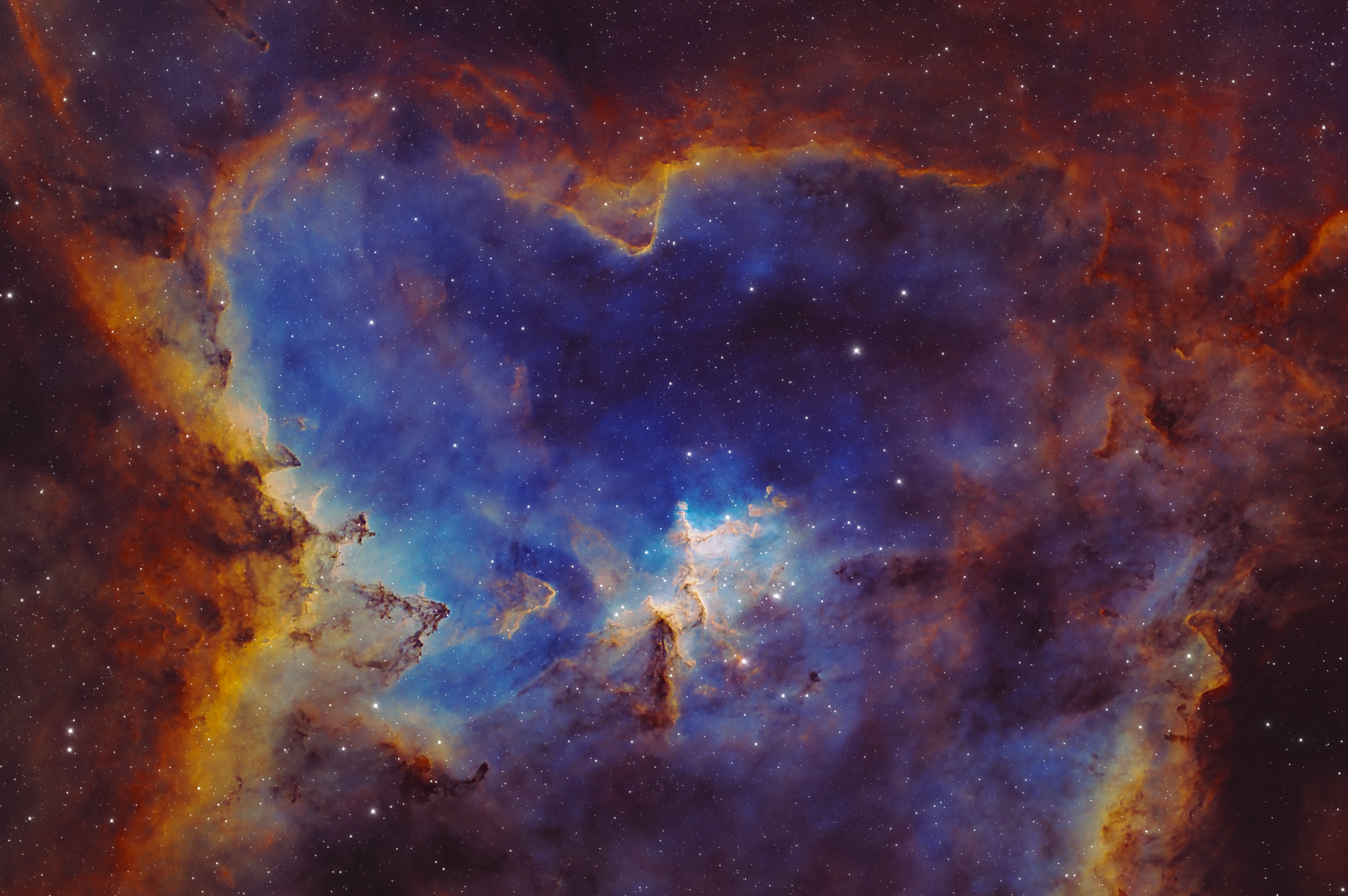Heart Nebula (IC 1805) - SHO
Emission nebula in Cassiopeia captured with narrowband SHO technique

Click to explore in full resolution
Technical Specifications
Resolution: 6000x4000 (2x drizzle upscaled)
Integration: 331 subexposures: 122 Ha + 111 OIII + 98 SII, 300s each
Captured: Captured over approximately one month
Equipment: Redcat71 refractor (350mm) with ZWO ASI2600MM Pro camera on Advanced VX mount
Location: Backyard location, Bortle 7 light pollution zone
Processing Workflow
Scientific Context
The Heart Nebula (IC 1805) is located approximately 7,500 light years away from Earth in the Perseus Arm of the Galaxy in the constellation Cassiopeia. This emission nebula showcases glowing ionized hydrogen gas and darker dust lanes, creating its distinctive heart-like shape.
The nebula's intense red output and morphology are driven by radiation from a small group of stars near its center. This open cluster, known as Collinder 26 or Melotte 15, contains several bright stars nearly 50 times the mass of our Sun, along with many dimmer stars that are only a fraction of the Sun's mass.
This image was captured using the SHO (Sulfur-Hydrogen-Oxygen) narrowband technique, which reveals the rich blue and orange colors from ionized oxygen and sulfur gases. The narrowband approach allows for detailed imaging even from light-polluted locations by filtering out most artificial light sources while capturing the specific wavelengths emitted by these ionized gases.
The Heart Nebula spans almost 2 degrees in the sky, covering an area four times the diameter of the full moon. Its shape is sculpted by powerful stellar winds from the hot, massive stars at its core, creating the intricate structures and cavities visible in this image.